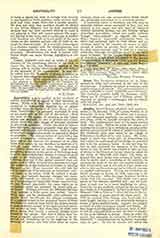

Amovibility, a term applied to the condition of certain ecclesiastics in regard to their benefices or offices. While it is true that holders of so-called perpetual or irremovable dignities can in certain specified cases be deprived of their offices, yet the term “amovibility” is generally restricted to such as are removable; at the will of the bishop. Such are most of the rectors of churches in the United States and England, as also in general and everywhere those who have charge of succursal churches or are parish assistants. Under the head of removable dignitaries, canonists generally class also vicars-general, archdeacons, and rural deans. Such an office or benefice is designated manuale, as opposed to titulare or perpetuunt. The interpretation of amovibility has caused considerable controversy. Many canonists have argued that because the possessor of an office holds it act nutum, he can therefore be deprived of it without cause. Otherwise, they declare, the word amovibility would have no meaning. They note as exceptions, however, to this power of the bishop, cases in which he acts from open hatred, or injures the good name of the ecclesiastic, or damages the parish. Likewise, they say, if the person removed were not given another office, he could have recourse to a superior authority, as this would be equivalent to injuring his good name. These canonists also add that the bishop would sin if he removed an ecclesiastic without cause, as his action would be without a proper motive, and because frequent changes are necessarily detrimental to churches. Other canonists seem to maintain for removable rectors (see Rector; Parish Priest) practically the same rights as to perpetuity, which are possessed by irremovable ecclesiastics. Perhaps, however, the difference between the opinions is little more than verbal. Amovibility must not be confounded with arbitrary removal, which the Church has always condemned. It is opposed rather to the perpetual tenure of those benefices, for removal from which the canons require a cause expressly named in law and a formal canonical process or trial. But there may be other very grave causes that justify a removal besides those named in the canons. Nor does it follow that, because a regular canonical process is not to be observed, all formalities are to be neglected in the removal of rectors who hold their office ad nutum episcopi; there are also extrajudicial forms which are practically equivalent to a canonical process.
A removable rector is, therefore, one who may be removed without cause expressed in law, but not without a just cause; one who may be removed without canonical process, but not without certain prescribed formalities, which are really judicial, though “extrajudicial” as regards the canons. Since, however, removable ecclesiastics have no strict and perpetual right to their offices, any revocation made by the superior ad nutum is valid, though it might be gravely illicit and reversible. In such cases recourse may be had to a superior authority, although an ordinary appeal in the strict sense is barred. In the United States the method of procedure is laid down principally in the Second Plenary Council of Baltimore (l8&) and the Roman Instructions “Quamvis” of 1878 and “Cum Magnopere” of 1884,
WILLIAM WINDSOR FANNING

